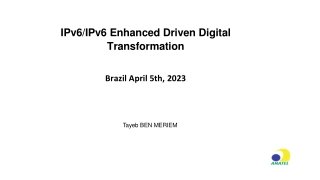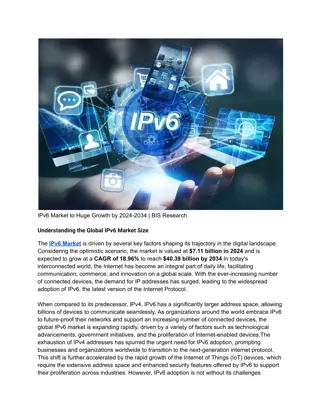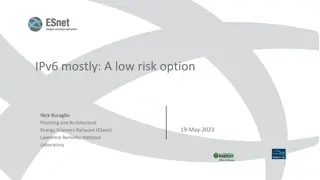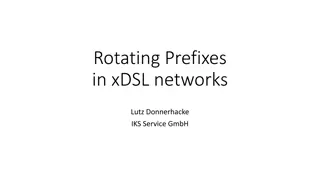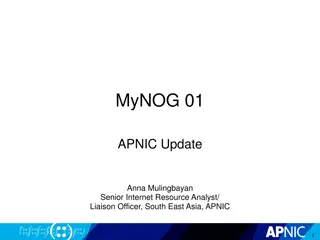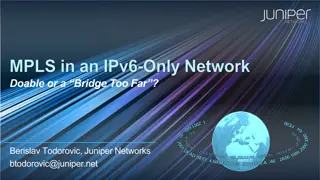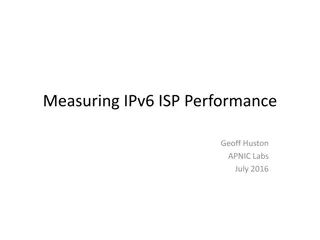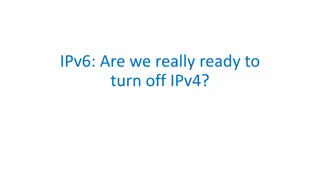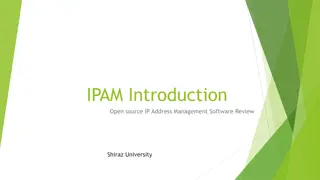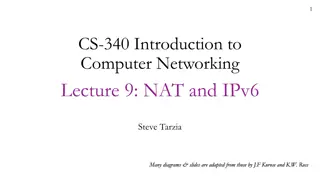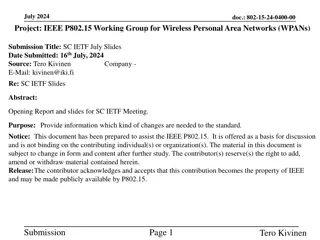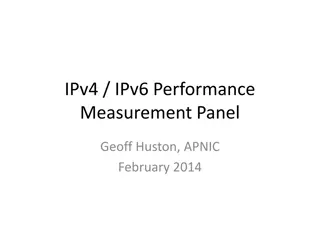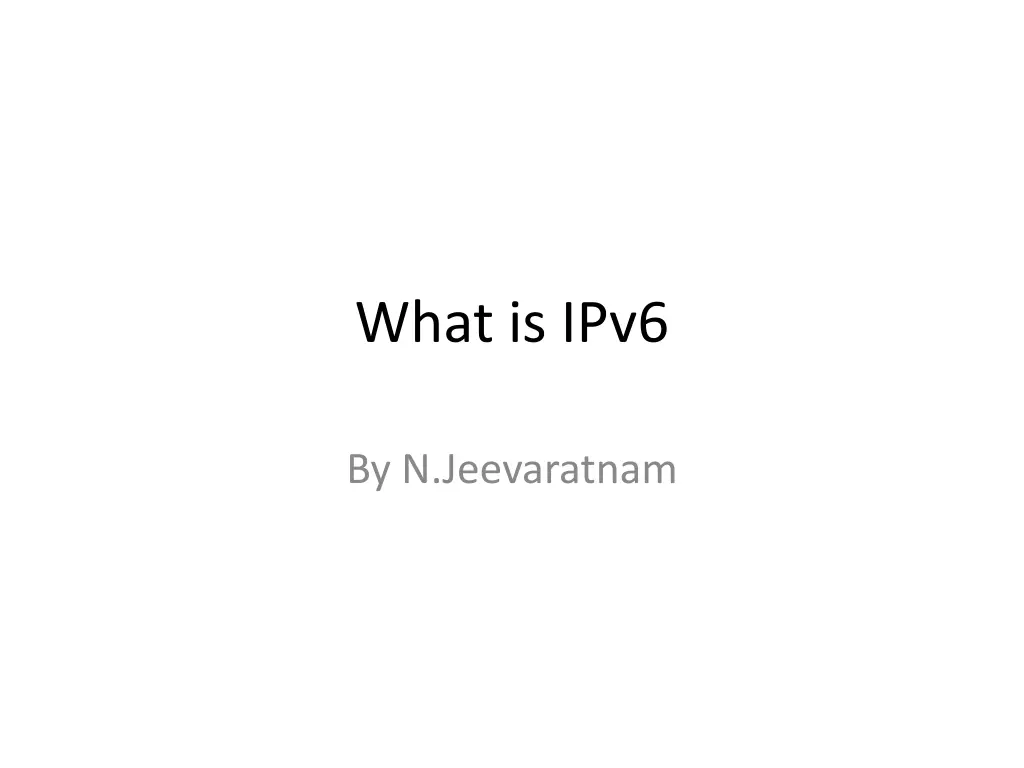
Understanding IPv6 Addressing: The Next Generation of IP Addresses
IPv6 is the next generation of IP addresses designed to overcome the limitations of IPv4. With a 128-bit hexadecimal address space, IPv6 offers a vast number of unique addresses and simpler headers compared to IPv4. Transition strategies such as dual stacking, tunneling, and network address translation facilitate the coexistence of both IPv4 and IPv6 protocols. Learn about the address format of IPv4 and IPv6 to grasp the fundamental differences between the two protocols.
Download Presentation

Please find below an Image/Link to download the presentation.
The content on the website is provided AS IS for your information and personal use only. It may not be sold, licensed, or shared on other websites without obtaining consent from the author. If you encounter any issues during the download, it is possible that the publisher has removed the file from their server.
You are allowed to download the files provided on this website for personal or commercial use, subject to the condition that they are used lawfully. All files are the property of their respective owners.
The content on the website is provided AS IS for your information and personal use only. It may not be sold, licensed, or shared on other websites without obtaining consent from the author.
E N D
Presentation Transcript
What is IPv6 By N.Jeevaratnam
What is IPv6? IPv4 produces 4 billion addresses, and the developers think that these addresses are enough, but they were wrong. IPv6 is the next generation of IP addresses. The main difference between IPv4 and IPv6 is the address size of IP addresses. The IPv4 is a 32- bit address, whereas IPv6 is a 128-bit hexadecimal address. IPv6 provides a large address space, and it contains a simple header as compared to IPv4.
It provides transition strategies that convert IPv4 into IPv6, and these strategies are as follows: Dual stacking: It allows us to have both the versions, i.e., IPv4 and IPv6, on the same device. Tunneling: In this approach, all the users have IPv6 communicates with an IPv4 network to reach IPv6. Network Address Translation: The translation allows the communication between the hosts having a different version of IP. This hexadecimal address contains both numbers and alphabets. Due to the usage of both the numbers and alphabets, IPv6 is capable of producing over 340 undecillion (3.4*1038) addresses.
IPv6 is a 128-bit hexadecimal address made up of 8 sets of 16 bits each, and these 8 sets are separated by a colon. In IPv6, each hexadecimal character represents 4 bits. So, we need to convert 4 bits to a hexadecimal number at a time
The diagram shows the address format of IPv4 and IPv6. An IPv4 is a 32-bit decimal address. It contains 4 octets or fields separated by 'dot', and each field is 8-bit in size. The number that each field contains should be in the range of 0-255. Whereas an IPv6 is a 128-bit hexadecimal address. It contains 8 fields separated by a colon, and each field is 16-bit in size.

